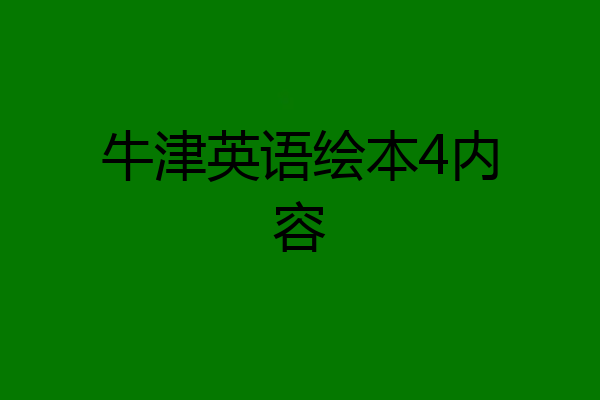
LuckyXue521
第四章阅读 乔伊斯要鼓励学生多阅读有名的著作。 所以,在她的报纸, 这从她印制了一本书叫做汤姆索亚历险记有趣的故事 由Mark Twain.Tom索耶油漆篱笆星期六上午来到 和一切美好和新鲜。 每一个城市男孩很高兴,但汤姆索亚。 汤姆站在与白色涂料桶人行道 和一个带长柄刷子在他手中 他看着栅栏,他的姨妈告诉他画,感觉很沮丧 这是三〇码三码长高! 他在下降,他的画笔描绘了围栏角落。 然后,他站在一边看着它的。 这是画的部分是如此之小, 和粉刷一节是如此之大! 他坐在树荫下到休息。 他开始考虑所有的规定,他的一天安排了一些游戏。 不久,男孩谁是自由会前来,并取笑他。 但就在这时,他有一个好主意。 他拿起画笔,回去工作。 本罗杰斯来到路上,哼着歌谣和执行一个苹果 他停下来,看着汤姆。 汤姆继续画,而忽视本。'我会游泳,' 本说。'你想去游泳,汤姆?不过,我想你不能。 你必须要保持和工作,是不是?'汤姆就画了。 '工作?'他说。'这不是work.I'米享受自己。 一个男孩是否有机会来画这样每天篱笆?' 本想过this.Tom画上了,小心。 有时候,他停下来,站在一边看的围栏, 然后将在适当的地点就一点油漆 本看着汤姆的一举一动 他越来越interested.After一会儿 他说,'汤姆,你让我做一些画?' 汤姆想过这个问题,并说,'不行,本,我不能。你看, 波莉姨妈希望大家要使用得当。 我是唯一一个谁可以做是正确的。'哦,请你,汤姆,' 求本。'我能做it.I'当地雇员必须非常谨慎,就让我来试试。 我给你我的apple.I'半,我给你它所有! 那么,所有的权利,本,'汤姆说。'但是你必须小心。 他给本脸上的喜悦,但在他心里担心他的画笔 他又坐到树下,开始吃苹果 这本给了him.All一天, 男孩来开玩笑,但他们最终留画。 当本累了,比利费舍尔等待。 他给汤姆一个机会来绘制风筝。 然后,约翰尼米勒给他12大理石等。 到下午晚些时候汤姆获得了各种玩具, 和栅栏已经获得了3油漆涂层 后来波莉姨妈来看看汤姆的工作。 她非常高兴看到她的画围栏,她给汤姆一个大蛋糕!


5ichocolate
an animalscount,Hi?My cat can.How do you know,Hi?I asked "What is6 minus 6" andit said nothing.Numbers:everyone'slanguage.aHow manylanguages do youknow?Everyone knowsat least two--his or her ownlanguage and theinternationallanguage ofnumbers.Ancient numbersIn ancienttimes,peoplewrote numbers inmany differentways.However,theynearly allcounted in tens.ZeroThe system ofnumbers todayconsists of thenumbers from 1to 9 and 0(zero).The Indiansfirst inventedand developedthe 1 to 9system ofnumbers.They theninvented thezero.The invention ofzero helpedpeople write bignumbers andcalculate moreeasily.Whit these tennumbers,we canwrite any numberfrom the biggestto the smallest.CalculatingmachinesOne of the firstcalculatingmachines was theabacus.Abacuses arefast andaccurate.On the abacus,the beads on thewires representones,tens,hundreds andthousands,starting fromthe bottom wire.The abacus inthe pictureshows a number.Write it down infigures,and thenin words.Multiply it byzero and thenadd 1.What isthe answer?Modernelectroniccalculators canadd,subtract,multiply anddivide.They can alsocalculatepercentages andsquare roots.Computers arevery powerfulcalculatingmachines.A computer cando millions ofcalculations ina flash.Cardinal andordinal numbers3 three5 five6 six9 nine13 thirteen15 fifteen16 sixteen19 nineteen30 thirty50 fifty60 sixty90 ninety32 thirty-two54 fifty-four67 sixty-seven98 ninety-eight100 one hundred200 two hundred375three hundredand seventy-five1,000one thousand4,189four thousandone hundred andeighty-nine15,362fifteen thousandthree hundredand sixty-two100,000one hundredthousand284,653two hundred andeighty-fourthousand sixhundred andfifty-three1,000,000one million5,367,982five millionthree hundredand sixty-seventhousand ninehundred andeighty-twoWe use ordinalnumber to showthe order ofthings.We form mostordinals byadding -th tothe cardinalnumbers.There are alsoexceptions,likefirst,second andthird.1st first2nd second3rd third5th fifth8th eighth9th ninth12th twelfth13th thirteenth20thtwentieth21sttwenty-first22ndtwenty-second23thtwenty-second100th hundredtht100May is callingher friend,Rita.Read theirconversation andpractise it.Then work inpairs to checkthe otherhomeworkproblems inMay's notebook.RITA:2890 6521(two eight ninezero,six fivetwo one).MAY:Hello,Rita.This is May.RITA:Hi,May.Whatcan I do foryou?MAY:I made amistake with myhomework,Ithink.Can Icheck it withyou?RITA:Sure.Whichone?MAY:Number 5.Isit 0.92 (zeropoint nine two)times 18.18(eighteen pointone eight)?RITA:No,itshould be 0.92times 18.16(eighteen pointone six).MAY:Thanks,Rita.See youtomorrow.Bye.RITA:Goodbye,May.TrafficaccidentsLi Jie askedOfficer Chenabout trafficaccidents.Thenshe drew a linegraph.Read theirconversationbelow and writethe figures onthe graph.LI JIE:How manytrafficaccidents werethere in twothousand and twoin our city?CHEN:Threethousand sixhundred andninety-one.LI JIE:What wasthe number intwo thousand andthree?CHEN:Threethousand sevenhundred andforty-eight.LI JIE:Whatabout in twothousand andfour?CHEN:Threethousand sixhundred andforty-four.LI JIE:And twothousand andfive?CHEN:Threethousand sevenhundred andtwenty-nine.LI JIE:Whatabout in twothousand andsix?CHEN:Threethousand sixhundred andthirty-nine.LI JIE:Thankyou,Mr Chen.CHEN:Not at all.t2Read about theinvention ofclocks andwatches.Clocks andwatchesNow,we can telltime veryaccurately,butbefore theinvention ofclocks,it wasvery difficult.People used theposition of thesun in the skyto tell time inancient times,but it wasimpossible to doit on cloudydays or atnight.In 1099,Su Songinvented thefirst mechanicalclock in China.195 years later,in 1283,the British inventedthe first clockin Europe.Then 67 years later,in 1350,the Germansinvented thealarm clock.The Italiansinvented thefirst watch in1462.Early watcheswere differentfrom today's intwo ways.First,they only hadone hand--thehour hand.Second,you hadto keep them inyour pocket.People calledthem 'pocketclocks'.The first wristwatches camefrom Switzerland328 years afterthe first pocketclock,but they did notbecome popularfor a hundredyears.Digital clocksand watches camefrom the UnitedStates and arethe latestinvention intime-keeping.Shops started tosell them in1971.
优质英语培训问答知识库